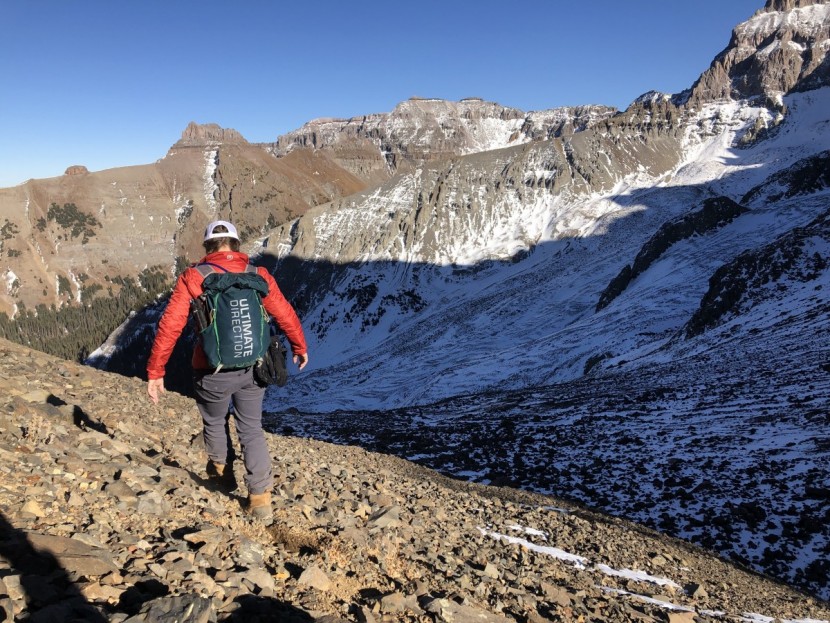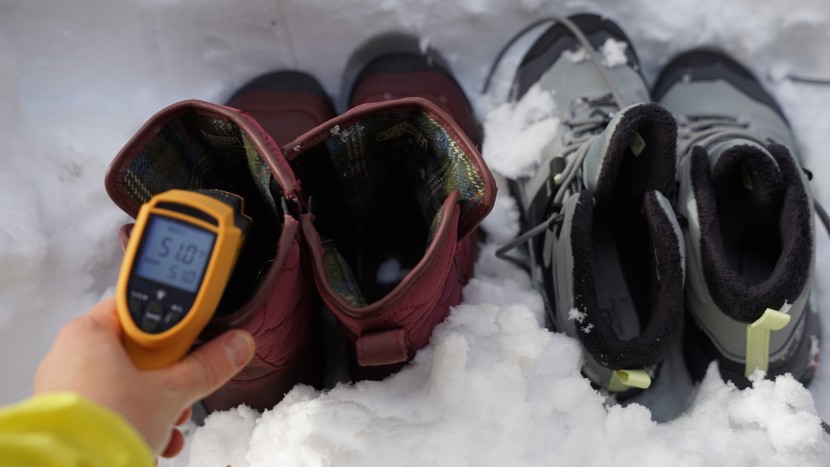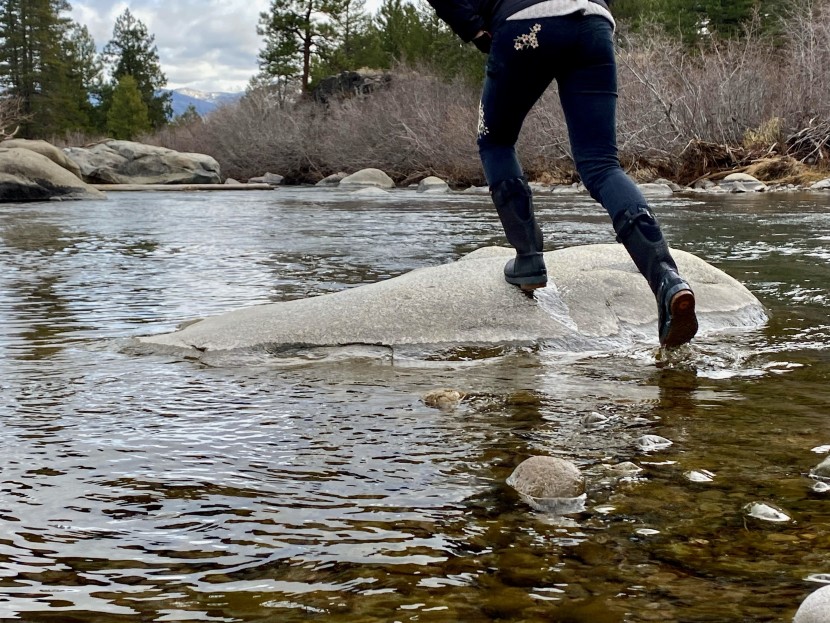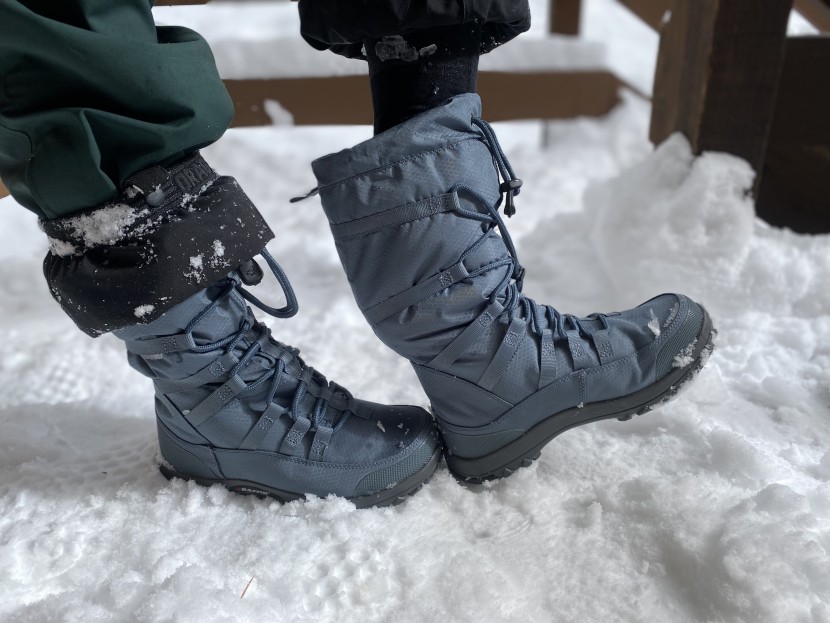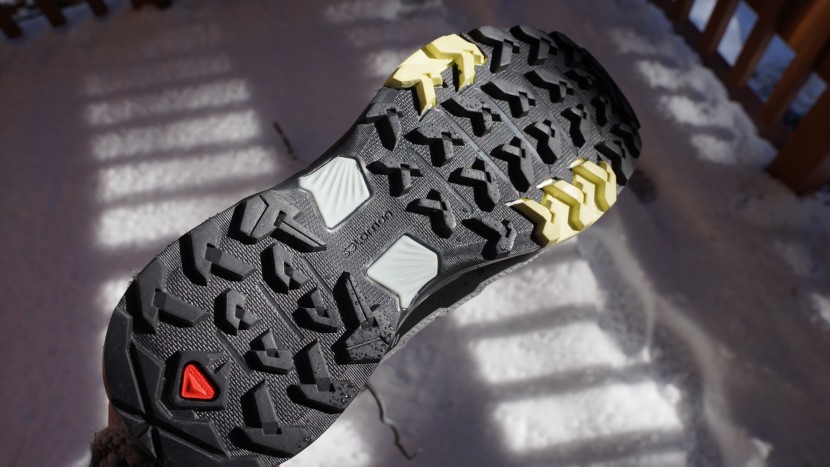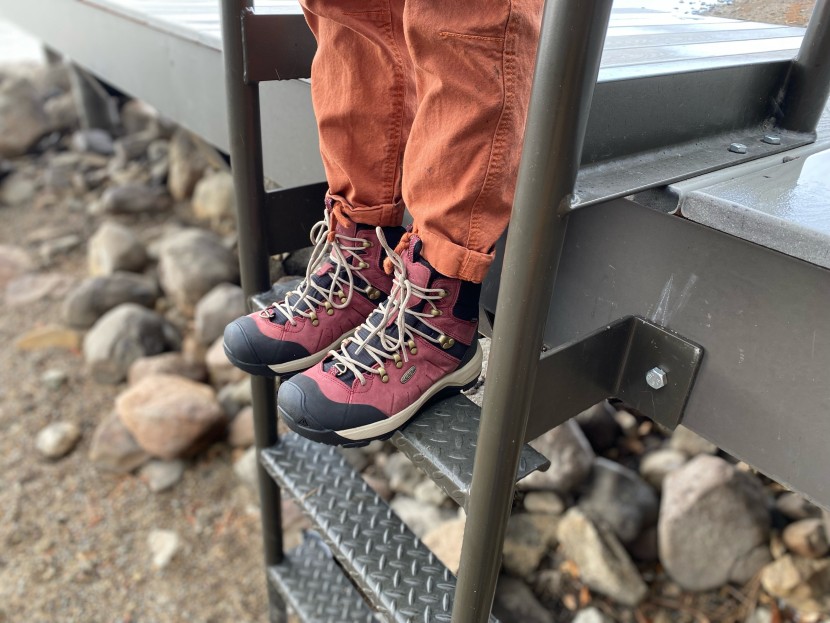Where We Test
We've tested the best winter boots on steep mountain hikes, across glacial ridges, into alpine lakes, and on icy streets and snowy trails. And, we've continued to test the older boots in our review through multiple winters. Depending on winter's arrival, we update our selections during shoulder seasons and early winter conditions in Colorado, on the West Coast, in Californian winters in Lake Tahoe and ventured through Northwestern volcanic glaciers to see how new entries and old favorites held up. We test all of our boots while shoveling feet of snow from our walkways and while walking around cold urban landscapes. Our tests span a wide range of winter climates and activities to find where boots excel and where they fall short of expectation.
Testing Metrics
Below we outline how we tested each specific metric, so you know what our objective and subjective testing scheme looks like.
Warmth
To test for warmth, we submerged each pair of boots in a cooler of ice water, measured the inside temperature with a temperature probe before dunking, and then remeasured the temperature after 10 minutes. We also submerged the boots in a shaded snow bank and took the temperature before and after to gauge the boot's temperature change in a stationary setting over two hours time.
We examined the quality and quantity of insulation to evaluate each contender's standing and active warmth, then measured the outsole barrier to determine the amount of insulation from the ground up. Finally, we wore the boots in cold temperatures and while splashing around in frigid lakes to report how toasty our feet felt in each pair of boots over time, in action, and while standing around.
We learned that while boots lose heat at different rates, this doesn't always correlate to our experience on foot. The type and amount of insulation surrounding the foot greatly affect how we experience cold, so measurements like warmth ratings are not the only way to determine how cozy you will feel.
Weather Protection
Weather protection is one of the more highly weighted metrics in this review because it directly affects warmth and comfort. A boot that keeps snow and water outside of the interior and keeps your feet dry is what you want. We tested both waterproofness and overall material coverage from snow and water.
We determined each boot's maximum puddle depth by standing in a tub full of water and measuring the point of failure. We used a measuring stick to determine when and where the boot began to leak and at what water depth. For the top scoring products, the depth of waterproofness was determined by the height of the boot, with less waterproof models failing at the seams, zippers, and loose tongue constructions. We also wore these boots while walking through snowbanks, over trails, and during snowstorms to determine snow entry from the top of the collar. If a boot took an extra-long time to dry out, we noted that as well.
Comfort and Fit
To determine comfort and fit, we compared the relative shape and level of support of each footbed, outsole, and midsole. We weighed the boots to provide a metric to reference when determining all-day and long-term comfort. We wore each pair with thin socks and thick socks and had both narrow and wide feet test the boots. Based on foot width, we noted any areas of constriction that would limit the fit of a boot to certain foot shapes. We researched the various types of insulations used and their effect on perceived comfort. For example, the felt liners were not as furry and cozy as some of the faux fur liners. We also looked into the stiffness and structure of each type of material and how that affected the perceived comfort level.
Traction
We tested traction the good old-fashioned way — taking our tests to the ice. We compared the performance of the boots on ice and snow. We created a ramp and walked it while it was dry, wet, and covered in ice. We walked across an icy driveway in each pair of boots as well. We noted if each boot provided traction on slippery, wet rocks during our river waterproof testing. Finally, we looked at lug depth and type of rubber (soft or hard) to determine which boots were best for travel over snow and which were better for technical winter terrain.
Quality of Construction
Our quality of construction metric was assessed through materials research and rugged testing. Physically, we stomped, kicked, and scraped boots up against pavement, rocks, trees, and ice to see how quickly and easily an upper would experience abrasions. We viciously rubbed the outsoles along the pavement to test how worn rubber lugs would get on warmer surfaces.
We researched the capabilities of each upper material and how they compared to one another in regards to general wear and tear in winter weather. Some materials break down more quickly in wet and cold conditions, some are less breathable, and some are downright not meant for heavy use in snow or rain. The boots we deemed more durable than others had thick rubber outsoles, a strong shaft, and stiff upper materials that supported the entire structure of the boot and resisted moisture retention.

